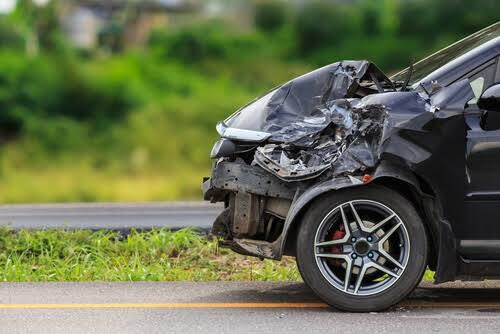Buying a used car can be an exciting yet daunting experience. As a certified vehicle inspector, I understand the importance of making an informed decision and avoiding potential pitfalls.
Purchasing a used car can be an exciting yet daunting experience. One crucial aspect to consider is whether the vehicle has been involved in any accidents in the past. Undisclosed accidents can significantly impact a car's safety, performance, and resale value. As a certified vehicle inspector, I have prepared this comprehensive guide to help car buyers effectively identify signs of accident history. By conducting thorough inspections of the body, engine, suspension, and other key areas, you can make an informed decision and avoid potential pitfalls.
Body Inspection:
a. Exterior: Begin by examining the exterior for any irregularities. Look for mismatched paint, variations in texture, or waviness, which may indicate repairs. Use a magnet to check for body filler (commonly known as Bondo) on steel panels. If the magnet doesn't stick in certain areas, it could suggest previous repairs.
Example: "How to detect accident repairs: A magnet won't stick to the rear left quarter panel, indicating a possible repair job."
b. Panel Gaps: Uneven or inconsistent panel gaps can indicate that a vehicle has undergone significant repairs. Measure the gaps between body panels, doors, and fenders to ensure they are uniform.
Example: "Panel gaps between the hood and fenders should be even on both sides; asymmetry may suggest a collision repair."
c. Paintwork Examination: Look closely for overspray, differing shades, or paint mismatch between panels. These signs could point to repainted sections and possible accident repairs.
Example: "An inspection under direct light reveals overspray on the driver's door handle, indicating a previous paint job."
Engine and Mechanical Components:
a. Fluid Levels: Check the oil, transmission fluid, and coolant levels. Abnormal levels, inconsistent colors, or signs of contamination could suggest mechanical issues resulting from an accident.
Example: "Milky or frothy oil may indicate coolant contamination, potentially indicating engine damage from a prior collision."
b. Visible Damage: Inspect the engine bay for any signs of recent repairs or replaced parts, such as fresh bolts, welding marks, or repainted components. These clues can indicate past accident damage.
Example: "Fresh welding marks on the radiator support bracket suggest recent repairs, potentially related to a front-end collision."
c. Frame and Chassis: Inspect the frame and chassis for signs of buckling, welding marks, or unevenness. These may indicate a previous collision and structural repairs.
Example: "Visible welding marks on the rear frame section suggest repairs following a rear-end collision."
Suspension and Undercarriage:
a. Alignment: Check the vehicle's ride height and ensure it appears level from all angles. Uneven or sagging suspension could indicate prior damage.
Example: "The left rear corner appears lower than the rest, suggesting possible suspension damage due to a previous accident."
b. Suspension Components: Inspect the suspension components for signs of recent repairs, such as replaced bushings, control arms, or damaged struts. These may indicate accident-related repairs.
Example: "Freshly replaced control arm bushings indicate recent suspension repairs due to a previous collision."
c. Rust and Corrosion: Examine the undercarriage for excessive rust or corrosion. Severe rust could weaken structural components and may indicate a previous accident repair.
Example: "Extensive rust and corrosion on the subframe may suggest prior damage and repairs."
Conclusion:
When purchasing a used car, it is crucial to conduct a thorough inspection to determine if the vehicle has been involved in any accidents. By following the guidelines provided in this comprehensive guide, you can identify signs of accident history in various areas such as the body, engine, suspension, and undercarriage. Remember to consider seeking the

Comments (0)
Please login to join the discussion
Be the first to comment on this article!
Share your thoughts and start the discussion